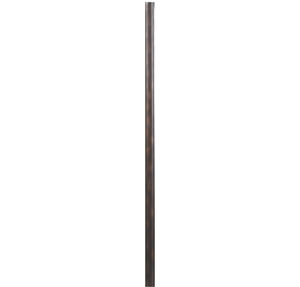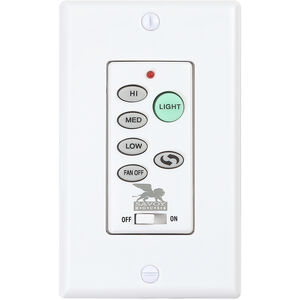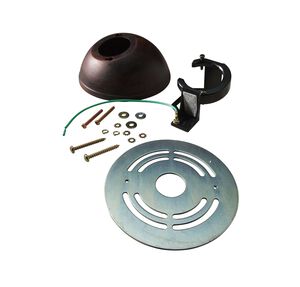Stella Ceiling Fan Receiver | Replacement & Universal Options
Is Your Stella Ceiling Fan Receiver Giving You Trouble?
Is Your Ceiling Fan Not Responding? The Stella Ceiling Fan Receiver Might Be the Culprit
We all love the comfort and convenience of a ceiling fan. But what happens when it stops responding? More often than not, the issue lies with the receiver. The receiver is the unsung hero tucked away in your ceiling fan, responsible for translating your remote's commands into action – controlling the fan speed, turning the lights on and off, and even reversing the direction of the blades. When it fails, it can leave you frustrated and sweltering. Let's explore how to identify problems and find the right solution.
The Problem: You're hot, the fan isn't working, and you don't know why.
The Stakes: Without a working ceiling fan, you're stuck with discomfort and potentially higher energy bills.
Understanding Your Ceiling Fan Receiver
The ceiling fan receiver is a small but crucial component that allows you to control your fan remotely. It sits within the fan's housing and receives signals from your remote, translating them into instructions for the fan motor and light. Over time, these receivers can fail due to power surges, wear and tear, or even just age.
Common Issues and Troubleshooting
If your ceiling fan isn't responding to the remote, here are a few things to check:
- Battery Check: Start with the simplest solution. Replace the batteries in your remote.
- Power Cycle: Turn off the power to the ceiling fan at the breaker for a few minutes, then turn it back on. This can sometimes reset the receiver.
- Wiring: Carefully inspect the wiring connections in the fan housing to ensure everything is secure. A loose wire can cause intermittent or complete failure. Refer to a wiring diagram for your specific fan model.
- Pairing: Sometimes, the remote and receiver lose their connection. Check your receiver's manual for instructions on how to re-pair them. This often involves pressing a button on the receiver and the remote in a specific sequence.
If none of these steps work, it might be time for a replacement.
Finding the Right Replacement
When it comes to replacing your ceiling fan receiver, you have a few options:
- Exact Replacement: The easiest solution is to find an exact replacement receiver from the original manufacturer (e.g., Hampton Bay, Harbor Breeze, Hunter). This ensures compatibility and a seamless installation. You'll want to check the FCC ID on the old receiver to ensure you get the right match.
- Universal Receiver: A universal receiver offers a more flexible solution, as it can work with a variety of ceiling fan brands. Look for a receiver that is compatible with your fan's voltage (120v or 220v) and has the features you need, such as light control, dimming, and reverse function.
- Smart Receiver: Upgrade your fan with a smart receiver for added convenience. These receivers can be controlled via a smartphone app or voice assistants like Alexa or Google Assistant.
Considerations for Choosing a Receiver:
- Compatibility: Ensure the receiver is compatible with your fan's motor and lighting system (including LED compatibility).
- Features: Decide which features are important to you, such as dimming, timer, reverse function, and wall control compatibility.
- Installation: Choose a receiver that is easy to install. Look for models with clear wiring diagrams and instructions.
- Remote Type: Decide if you want a learning remote, a dip switch remote, or an RF remote. Long-range RF remotes offer better performance and reliability.
Finishes and Styles:
Receivers themselves aren't visible, but consider the finish of the remote. Common finishes include brushed nickel, white, and black to match your fan and décor. Look for low-profile or small receivers if space is limited within the fan housing. Quiet operation is also a desirable feature.
Use Cases:
- Living Room/Bedroom: A receiver with dimming and a timer can create the perfect ambiance for relaxing or sleeping.
- Outdoor Fan: Choose a receiver designed for outdoor use, which is typically more resistant to moisture and temperature changes.
- Vaulted Ceiling/Flush Mount: Ensure the receiver is compatible with the fan type and ceiling configuration.
By understanding the role of the ceiling fan receiver and knowing how to troubleshoot and replace it, you can keep your ceiling fan running smoothly and enjoy its comfort for years to come.
Savoy House
Savoy House
Savoy House
Savoy House
Savoy House
Savoy House
Savoy House
Savoy House
Savoy House
Savoy House
Savoy House
View all Stella Ceiling Fan Receiver
Commonly Asked Questions About Stella Ceiling Fan Receiver
Q: What are the benefits of having a ceiling fan receiver in my home?
A: A ceiling fan receiver offers enhanced convenience and control over your ceiling fan. It allows you to operate your fan and lights remotely, often with a sleek and user-friendly remote control, making adjusting the settings from anywhere in the room a breeze!
Q: Can a ceiling fan receiver help modernize my existing ceiling fan?
A: Absolutely! Adding a ceiling fan receiver is a fantastic way to upgrade your existing fan's functionality without replacing the entire unit. It brings your older fan into the modern age with remote control capabilities and often provides additional features like dimming and speed settings.
Q: Are ceiling fan receivers compatible with a wide range of ceiling fan models?
A: Yes, many ceiling fan receivers are designed for broad compatibility. It's always a good idea to check the receiver's specifications to ensure it works perfectly with your specific fan, but you'll likely find a receiver that's a great match!
Q: How can a ceiling fan receiver enhance the ambiance of my living space?
A: Ceiling fan receivers often come with dimming capabilities for the lights, which allows you to easily adjust the brightness and create the perfect atmosphere for any occasion. Imagine setting the mood for a relaxing evening or a lively gathering with just a touch of a button!
Q: If I'm not experienced with electrical work, how should I approach installing a ceiling fan receiver?
A: For a safe and proper installation, it's always best to consult with a qualified and licensed electrician. They have the expertise to ensure everything is connected correctly and functioning optimally, giving you peace of mind.



